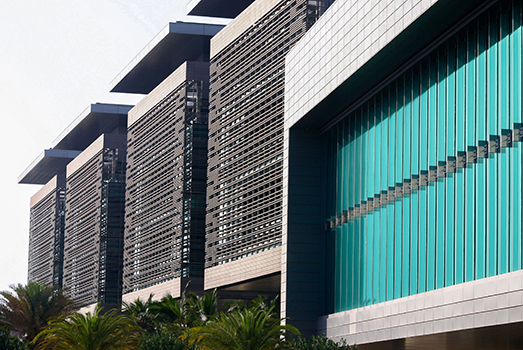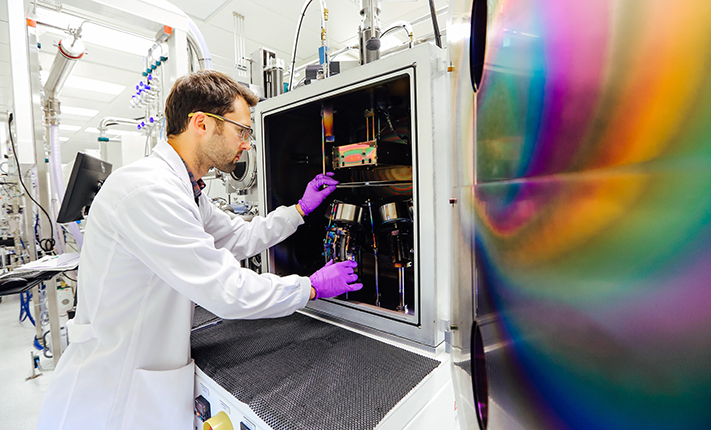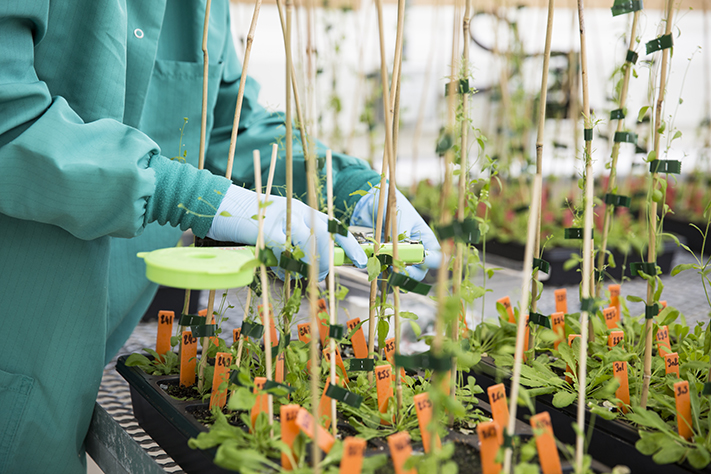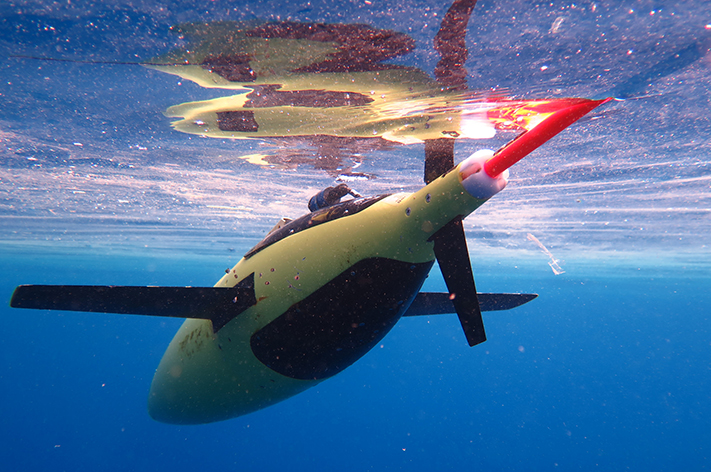KAUST year in review: Selected highlights

As we embark onto a new year, we look back at some of the achievements at KAUST during 2016.
During the past summer, KAUST was listed among the Nature Index 2016 Rising Stars ranking, coming in at 19th place globally and first in the Middle East and West Asia. The list was based on the tracking of high-impact research from more than 8,000 global institutions, specifically focusing on ascendant performers in the world of science.

A major metric used by Nature was to focus on transformational institutions that have increased their contribution to a selection of 68 top natural science journals (weighted fractional count [WFC]), and who have improved their performance within their scope of longevity, reputation and resources.
"Saudi contribution to high-quality research almost doubled over the past four years. Authors from 40 organizations in the Kingdom have had their research published in index journals over four years," Nature noted.
The performance of KAUST in the Nature Index places it in the leading position as No. 1 in Saudi Arabia, with the University representing about 75 percent of the science output of the country.
The leading position of KAUST with respect to research output in the region and the world was recognized by the QS World University Rankings 2016-2017, which ranked the University first globally in the category of Faculty Citations.
The role of KAUST as a catalyst for innovation both in Saudi Arabia and the wider region was highlighted by President Jean-Lou Chameau during his State of the University address in September. “We are catching the attention of the world for all of our progress and accomplishments. As a young institution, KAUST is doing extremely well and beyond expectations,” he said.

Regularly highlighted in KAUST Discovery, the innovative research published by our faculty and scientists focus on the University’s research pillars of water, food, energy and the environment — specifically tackling problems relevant to the region.
Some of the research highlighted in the past year include the complete sequencing of a seagrass genome that could be vital to our understanding of plant adaptation to growth in seawater and vulnerability to stresses, such as climate change. In 2016, KAUST scientists also became the first to determine the atomic 3-D structure of a key protein for mediating plant stress signaling.

As the world prepares to tackle the challenge of feeding 9 billion people by the year 2015, such research plays an important role in the equation.
As part of its overall mission, KAUST also recognized the pivotal importance of supporting the growth of entrepreneurship in the region. Translating research in the lab into viable products to address pressing needs is a vital component.
One of many examples of KAUST research addressing concrete world needs is a cutting-edge, flexible and low-cost technology called Smart Bandage — a medical device capable of wirelessly communicating to healthcare providers the parameters and abnormalities in wounds’ recovery process.
During the past year, the University has continued to build and strengthen strategic partnerships to help drive the KAUST vision, mission and values. A recently signed agreement with the Saudi British Bank (SABB) to launch a multi-university startup accelerator (TAQADAM) aims to help early stage university students and faculty entrepreneurs at Saudi universities develop their concepts into high-potential startups.
On the research front, the University has continued to build on its long-sanding partnership with Saudi Aramco during 2016. On December 16, a groundbreaking ceremony launched the construction phase of a new state-of-the-art research center on the KAUST research park slated for completion in mid-2019.
“Saudi Aramco and KAUST are leaders in technology development domestically and internationally," said H.E. Khalid Al-Falih, Saudi minister of energy, industry and mineral resources and vice-chairman of the KAUST board of trustees. "Their unique roles in developing innovative and original research is essential to the future success of the energy industry in Saudi Arabia.”

Ongoing collaborations with Saudi Aramco include a glider program which is transforming our knowledge of the Red Sea. The Marine Environmental Research Center established jointly by KAUST and Saudi Aramco is the first oceanic observatory capable of monitoring the Red Sea. Earlier in the year, we also featured the work of the KAUST-based Saudi Aramco Intelligent Systems Team (all KAUST graduates) who built a robotic crawler that can conduct visual and ultrasonic inspection of Aramco’s steel operational assets and sense gas.
In September, KAUST also solidified another long-standing partnership with Boeing. The renewal of the Master Research Agreement (MRA) marked a significant milestone for Boeing and KAUST as they seek to boost collaborative research on next-generation aerospace technologies.
Other agreements signed in 2016 include allowing the Aviation Investigation Bureau (AIB) of the Kingdom of Saudi Arabia to use the advanced facilities and research expertise at KAUST in the event of aviation incidents. Additionally, KAUST and FEI announced a collaboration agreement to establish a new Center of Excellence located at the KAUST Research & Technology Park on the University’s campus focusing on microscopy workflow solutions.
The past year saw some prestigious awards and recognitions conferred upon several KAUST faculty members.
Most recently, Vice President for Research Jean M.J. Fréchet joined a small, highly elite group of researchers when he surpassed the 100,000 citation mark. Fréchet was also elected as a Fellow of the National Academy of Inventors (NAI). An induction ceremony took place this past April in Alexandria, Virginia, where Charlotte A. E. Hauser, KAUST professor of bioscience, was also elected as an NAI Fellow. Joining Fréchet and Hauser, Jean-Marie Basset, KAUST distinguished professor of chemical science and director of the University's Catalysis Center, will receive the same honor in next year’s ceremony in Boston, Massachusetts.
Earlier in the year, Jean-Luc Bredas, KAUST distinguished professor of material science and engineering, received a 2016 American Chemical Society (ACS) Award in the Chemistry of Materials at the 251st ACS National Meeting in San Diego, California on March 15, 2016.
Other KAUST faculty recognitions in 2016 include Carlos Duarte, director of the Red Sea Research Center, being elected as an ASLO (Association for the Sciences of Limnology and Oceanography) Fellow. During the course of the year, the American Physical Society (APS) also elected Xixiang Zhang, KAUST professor of Material Science and Engineering, and Muhammad Mustafa Hussain, KAUST associate professor of electrical engineering, as Fellows. During this coming year, in France, KAUST Professor of Electrical Engineering Jeff S. Shamma will be honored for his recent election as a Fellow of the International Federation of Automatic Control (IFAC).
Also to be recognized in France in the coming year, KAUST associate professor of chemical science Niveen Khashab will receive her 2017 L’Oréal-UNESCO For Women in Science Award. She will be one of five 2017 For Women in Science awardees. At a ceremony earlier this year in March, Jasmeen Merzaban, KAUST assistant professor of bioscience, received a L’Oréal-UNESCO For Women in Science International Rising Talents award. Further highlighting the quality of the rising talent at KAUST, Ying Sun, assistant professor of statistics, won the 2016 Abdel El-Shaarawi Young Researcher (AEYR) Award from the International Environmetrics Society (TIES) in June.
As we embark onto a new year, we look back at some of the achievements at KAUST during 2016.
A regional and global leader in research output
During the past summer, KAUST was listed among the Nature Index 2016 Rising Stars ranking, coming in at 19th place globally and first in the Middle East and West Asia. The list was based on the tracking of high-impact research from more than 8,000 global institutions, specifically focusing on ascendant performers in the world of science.

Nature Index 2016 ranked KAUST 19th in Top 100 institutions globally leading in high-quality science.
A major metric used by Nature was to focus on transformational institutions that have increased their contribution to a selection of 68 top natural science journals (weighted fractional count [WFC]), and who have improved their performance within their scope of longevity, reputation and resources.
"Saudi contribution to high-quality research almost doubled over the past four years. Authors from 40 organizations in the Kingdom have had their research published in index journals over four years," Nature noted.
The performance of KAUST in the Nature Index places it in the leading position as No. 1 in Saudi Arabia, with the University representing about 75 percent of the science output of the country.
The leading position of KAUST with respect to research output in the region and the world was recognized by the QS World University Rankings 2016-2017, which ranked the University first globally in the category of Faculty Citations.
The role of KAUST as a catalyst for innovation both in Saudi Arabia and the wider region was highlighted by President Jean-Lou Chameau during his State of the University address in September. “We are catching the attention of the world for all of our progress and accomplishments. As a young institution, KAUST is doing extremely well and beyond expectations,” he said.
Research with tangible results

Regularly highlighted in KAUST Discovery, the innovative research published by our faculty and scientists focus on the University’s research pillars of water, food, energy and the environment — specifically tackling problems relevant to the region.
Some of the research highlighted in the past year include the complete sequencing of a seagrass genome that could be vital to our understanding of plant adaptation to growth in seawater and vulnerability to stresses, such as climate change. In 2016, KAUST scientists also became the first to determine the atomic 3-D structure of a key protein for mediating plant stress signaling.

KAUST researchers seek solutions to address pressing regional and global problems.
As the world prepares to tackle the challenge of feeding 9 billion people by the year 2015, such research plays an important role in the equation.
As part of its overall mission, KAUST also recognized the pivotal importance of supporting the growth of entrepreneurship in the region. Translating research in the lab into viable products to address pressing needs is a vital component.
One of many examples of KAUST research addressing concrete world needs is a cutting-edge, flexible and low-cost technology called Smart Bandage — a medical device capable of wirelessly communicating to healthcare providers the parameters and abnormalities in wounds’ recovery process.
Productive partnerships to grow impact
During the past year, the University has continued to build and strengthen strategic partnerships to help drive the KAUST vision, mission and values. A recently signed agreement with the Saudi British Bank (SABB) to launch a multi-university startup accelerator (TAQADAM) aims to help early stage university students and faculty entrepreneurs at Saudi universities develop their concepts into high-potential startups.
On the research front, the University has continued to build on its long-sanding partnership with Saudi Aramco during 2016. On December 16, a groundbreaking ceremony launched the construction phase of a new state-of-the-art research center on the KAUST research park slated for completion in mid-2019.
“Saudi Aramco and KAUST are leaders in technology development domestically and internationally," said H.E. Khalid Al-Falih, Saudi minister of energy, industry and mineral resources and vice-chairman of the KAUST board of trustees. "Their unique roles in developing innovative and original research is essential to the future success of the energy industry in Saudi Arabia.”

A KAUST glider completed 1,000 dives in the Red Sea on November 22, 2015.
Ongoing collaborations with Saudi Aramco include a glider program which is transforming our knowledge of the Red Sea. The Marine Environmental Research Center established jointly by KAUST and Saudi Aramco is the first oceanic observatory capable of monitoring the Red Sea. Earlier in the year, we also featured the work of the KAUST-based Saudi Aramco Intelligent Systems Team (all KAUST graduates) who built a robotic crawler that can conduct visual and ultrasonic inspection of Aramco’s steel operational assets and sense gas.
In September, KAUST also solidified another long-standing partnership with Boeing. The renewal of the Master Research Agreement (MRA) marked a significant milestone for Boeing and KAUST as they seek to boost collaborative research on next-generation aerospace technologies.
Other agreements signed in 2016 include allowing the Aviation Investigation Bureau (AIB) of the Kingdom of Saudi Arabia to use the advanced facilities and research expertise at KAUST in the event of aviation incidents. Additionally, KAUST and FEI announced a collaboration agreement to establish a new Center of Excellence located at the KAUST Research & Technology Park on the University’s campus focusing on microscopy workflow solutions.
Faculty awards and recognitions
The past year saw some prestigious awards and recognitions conferred upon several KAUST faculty members.
Most recently, Vice President for Research Jean M.J. Fréchet joined a small, highly elite group of researchers when he surpassed the 100,000 citation mark. Fréchet was also elected as a Fellow of the National Academy of Inventors (NAI). An induction ceremony took place this past April in Alexandria, Virginia, where Charlotte A. E. Hauser, KAUST professor of bioscience, was also elected as an NAI Fellow. Joining Fréchet and Hauser, Jean-Marie Basset, KAUST distinguished professor of chemical science and director of the University's Catalysis Center, will receive the same honor in next year’s ceremony in Boston, Massachusetts.
Earlier in the year, Jean-Luc Bredas, KAUST distinguished professor of material science and engineering, received a 2016 American Chemical Society (ACS) Award in the Chemistry of Materials at the 251st ACS National Meeting in San Diego, California on March 15, 2016.
Other KAUST faculty recognitions in 2016 include Carlos Duarte, director of the Red Sea Research Center, being elected as an ASLO (Association for the Sciences of Limnology and Oceanography) Fellow. During the course of the year, the American Physical Society (APS) also elected Xixiang Zhang, KAUST professor of Material Science and Engineering, and Muhammad Mustafa Hussain, KAUST associate professor of electrical engineering, as Fellows. During this coming year, in France, KAUST Professor of Electrical Engineering Jeff S. Shamma will be honored for his recent election as a Fellow of the International Federation of Automatic Control (IFAC).
Also to be recognized in France in the coming year, KAUST associate professor of chemical science Niveen Khashab will receive her 2017 L’Oréal-UNESCO For Women in Science Award. She will be one of five 2017 For Women in Science awardees. At a ceremony earlier this year in March, Jasmeen Merzaban, KAUST assistant professor of bioscience, received a L’Oréal-UNESCO For Women in Science International Rising Talents award. Further highlighting the quality of the rising talent at KAUST, Ying Sun, assistant professor of statistics, won the 2016 Abdel El-Shaarawi Young Researcher (AEYR) Award from the International Environmetrics Society (TIES) in June.

